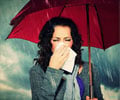A new report reveals that a device known as soft x-ray electrostatic precipitator managed to protect immunocompromised mice from airborne pathogenic bacteria and allergens

"Small particles are difficult to remove, and our device overcomes that barrier," says Pratim Biswas of Washington University, St. Louis. The device not only captures particles with a high level of efficiency that has never before been achieved; it also inactivates them. Even bioterror agents are blocked and completely inactivated, says Biswas.
The range of potential uses includes indoor protection of susceptible populations, such as people with respiratory illness or inhalation-induced allergies, and young children; protection of buildings from bio-terror attack; protection of individuals in hospital surgical theaters, for example, during open organ surgery; protection in clean rooms for semiconductor fabrication; removal of ultrafine particles in power plants; and capture of diesel exhaust particulates, says Biswas.
The device could be used in homes, with a cost similar to that of high efficiency air cleaners, says Biswas. "But it would be much easier to operate, and much more effective," he adds. It could be added into stand-alone indoor air cleaners, or incorporated into HVAC systems in homes, offices, and even in aircraft cabins. In the study, the device exceeded standards for high efficiency articulate air filters, which must be capable of removing particles larger than 0.3 micrometers with 99.97 percent efficiency.
The SXC ESP works by placing a charge on the particles—"which it does very effectively," says Biswas—and then using an electrical field to trap the particles. The SXC unit then also completely inactivates biological particles, by irradiating them, and photoionizing them—as UV light does, only more energetically.
Advertisement










